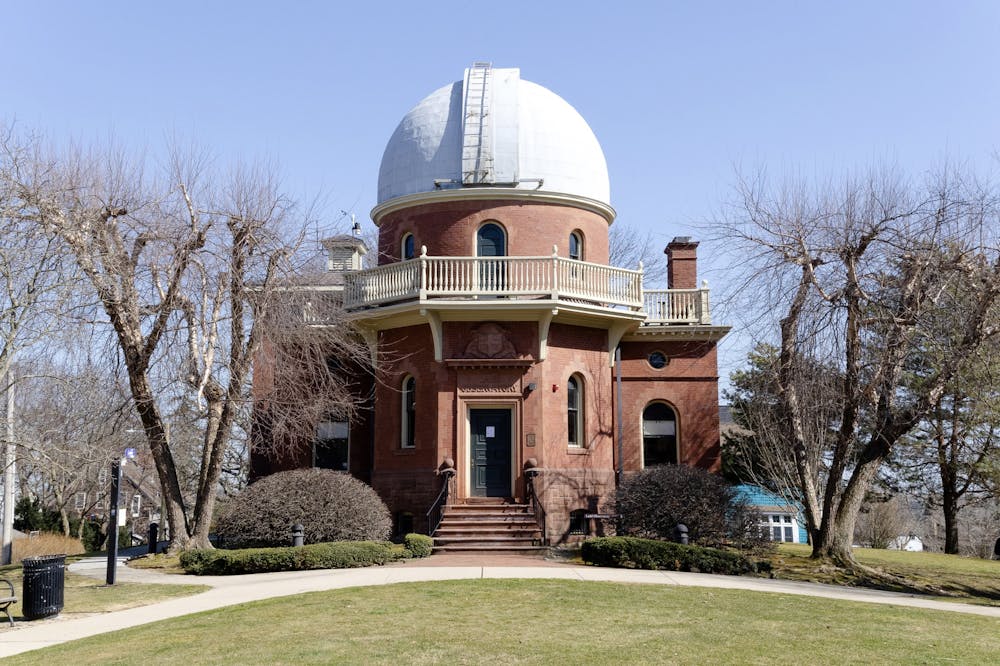The Brown Outing Club and Astronomy Club are organizing a 50-student trip to New York to view the 2024 solar eclipse occurring on April 8. The groups will choose around 10 students from a lottery to join the trip.
Trip participants will be chosen through a lottery-based system. Alexis Ortega GS said roughly 350 students have expressed interest in the trip. Students will travel to Rochester, New York to watch the sun be covered 100% by the moon, compared to Providence which will experience 91.9% coverage. The partial eclipse will begin at 11:42 a.m. EST, and the total eclipse will begin at 12:38 p.m. EST.
“We planned this event to enrich Brown’s student body, providing opportunities for engagement and education,” Samuel Ferraro ’25, the co-treasurer of the Astronomy Club, wrote in an email to The Herald. “A solar eclipse like this is a rare event and having one occur so close to campus presents a unique chance for students to witness a once-in-a-lifetime astronomical event.”
Ferraro said that the clubs wanted to bring more students onto the trip, but were unable to because renting a bus was too expensive. Instead, a team of volunteer student drivers will help transport the students.
Ortega said the drive up to Rochester will take five to six hours. He says the students plan to spend the night “camping style,” then head to the University of Rochester for a joint viewing event.
Students not chosen for the lottery will still have the opportunity to view the solar eclipse on the Main Green where the Brown Physics Department and the NASA Rhode Island Space Grant Consortium will host a viewing event. The groups will provide telescopes and a safe viewing opportunity on-campus, according to Ortega. Improper viewing of the eclipse may result in permanent eye damage or “eclipse blindness,” impacting central and color vision.
Ortega added that there may be some “weird effects” occurring during the eclipse. Viewers will be able to see a “ring of fire” around the sun as the only visible part of the sun will be the corona — the outermost part of the sun’s atmosphere. The event’s specialized telescopes will allow viewers to see “little solar flares” that are typically not visible to the naked eye.
Viewers may also experience a sudden drop in temperature, with most places seeing a drop of around five to ten degrees Fahrenheit. Observers may also notice a stark change in animal behavior, as critters may become confused by the sudden darkness in the middle of the day.
“I just really want to experience such a rare event,” Ferraro wrote. After the solar eclipse this year, another full eclipse will not be visible in the contingent United States until August 2044.
“Anyone can get something out of an event like this,” Ferraro wrote. “The massive ball of fire that's been with you since day one is about to disappear for a bit — that’s pretty cool. No matter who you are, I guarantee you won’t regret taking a look at the eclipse.”

Claire Song is a university news and science & research editor for The Herald. She is a sophomore from California studying Applied Math-Biology. She likes to drink boba in her free time.





